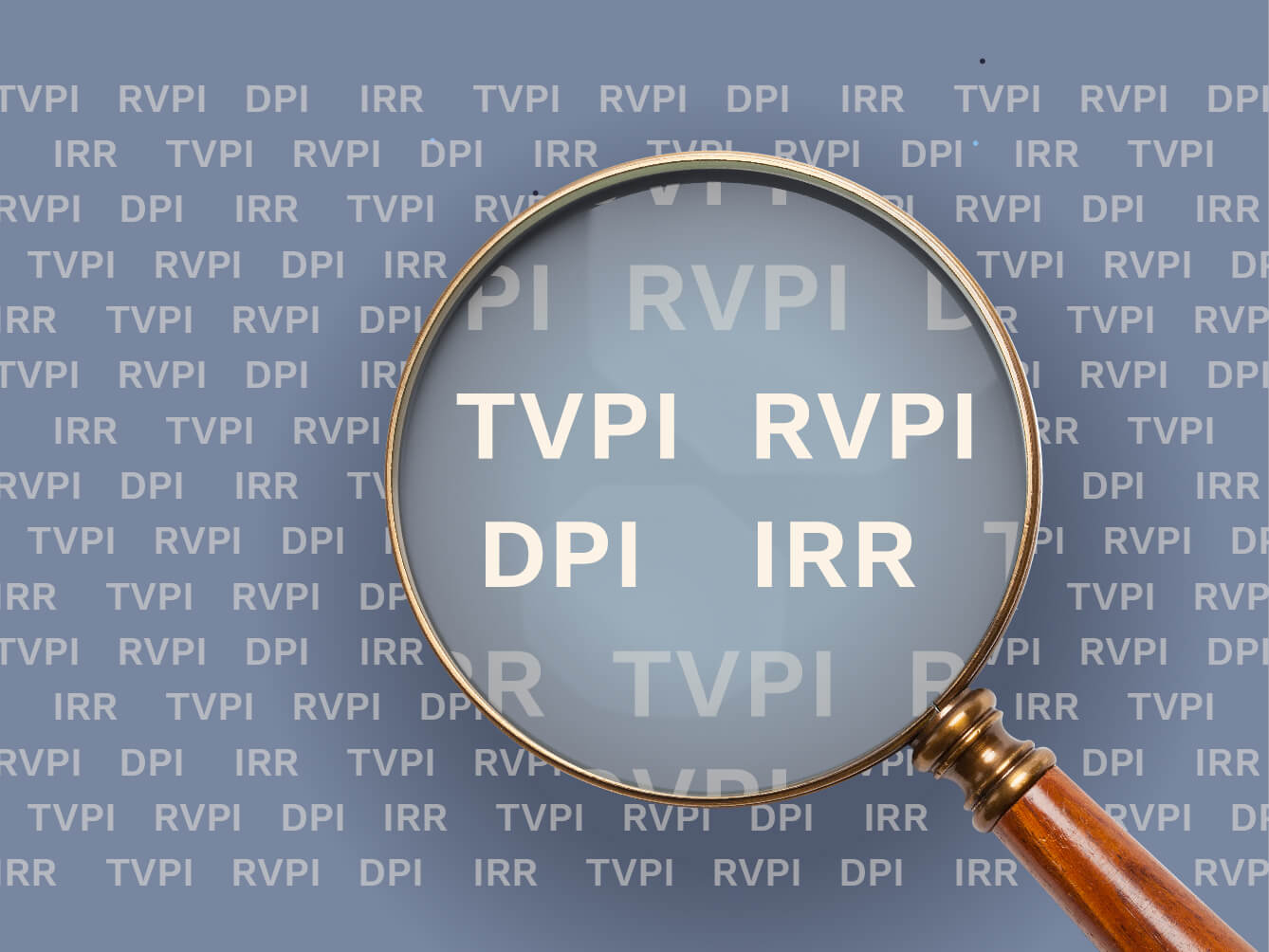
Private markets, cloaked in complexity, harbour a myriad of enigmatic acronyms—TVPI, RVPI, DPI, and IRR. These seemingly enigmatic codes hold the key to understanding investment performance in Private Markets. But deciphering them is only the beginning; discerning investors must wield this knowledge with precision.
While the ostensible objective of a General Partner (GP) is to optimize returns for investors, this endeavour is fraught with complexity and nuance. One might be tempted to fixate on maximizing TVPI, yet this approach overlooks the tangible value of immediate cash returns (DPI) vis-à-vis the speculative worth of the unsold portfolio (RVPI). Furthermore, it disregards the temporal dimension; a rupee today holds greater value than a rupee promised tomorrow.
Alternatively, prioritizing short-term DPI gains through rapid asset liquidation fails to acknowledge the potential for value creation through sustained revenue growth and margin enhancements. Premature exits risk undermining existing investors and offering undue advantage to buyers.
Then there’s the allure of maximizing IRR through swift exits. Yet, investors must weigh immediate high returns against the allure of long-term compounding, potentially yielding superior TVPI and DPI albeit at the expense of a lower IRR due to extended holding periods.
You can see that the GPs job is not to simply ‘maximize returns’ but to balance out the attraction (and the risk) of longer term compounding with the comfort of getting cash back sooner rather than later.
So, how do GPs navigate this intricate terrain?
In this nuanced ballet of risk and reward, GPs proceed with caution, mindful of investors’ quest for stable growth.
TERMS OF USE
Thank you for your interest in our Website at https://unlistedintel.com/. Your use of this Website, including the content, materials and information available on or through this Website (together, the “Materials”), is governed by these Terms of Use (these “Terms”). By using this Website, you acknowledge that you have read and agree to these Terms.
NO OFFER, SOLICITATION OR ADVICE
Our site is provided for informational purposes only. It does not constitute to constitute (i) an offer, or solicitation of an offer, to
purchase or sell any security, other assets, or service, (ii) investment, legal, business, or tax advice, or an offer to provide such advice or (iii) a basis for making any investment decision.
The Materials are provided for informational purposes and have been prepared by Oister Global for informational purposes to acquaint existing and prospective underlying funds, entrepreneurs, and other company founders with Oister Global's recent and historical investment activities.
Please note that any investments or portfolio companies referenced in the Materials are illustrative and do not reflect the performance of any Oister Global fund as a whole. There is no obligation for Oister Global to update or alter any forward-looking statements, whether as a result of new information, future events, or otherwise.
PURPOSE LIMITATION AND ACCESS TO YOUR PERSONAL DATA:
We will only collect your personal data in a fair, lawful, and transparent manner. We will keep your personal data accurate and up to date. We will process your personal data in line with your legal rights. We use your name and contact details, such as email, postal address, and contact number to continue communications with you. We may also use your contact information to invite you to events we are hosting or to keep you updated with our news.
USE OF COOKIES OR SIMILAR DEVICES
We use cookies on our website. This helps us to provide you with a better experience when you browse our website and also allows us to make improvements to our site. You may be able to change the preferences on your browser or device to prevent or limit your device’s acceptance of cookies, but this may prevent you from taking advantage of some of our features.
MATERIAL
The material displayed on our site is provided “as is”, without any guarantees, conditions, or warranties as to its accuracy, completeness, or reliability. You should be aware that a significant portion of the Materials includes or consists of information that has been provided by third parties and has not been validated or verified by us. In connection with our investment activities, we often become subject to a variety of confidentiality obligations to funds, investors, portfolio companies, and other third parties. Any statements we make may be affected by those confidentiality obligations, with the result that we may be prohibited from making full disclosures.
MISCELLANEOUS
This Website is operated and controlled by Oister Global in India. We may change the content on our site at any time. If the need arises, we may suspend access to our site, or close it indefinitely. We are under no obligation to update any material on our site.
CONTACT INFORMATION
Any questions, concerns or complaints regarding these Terms should be sent to info@oisterglobal.com